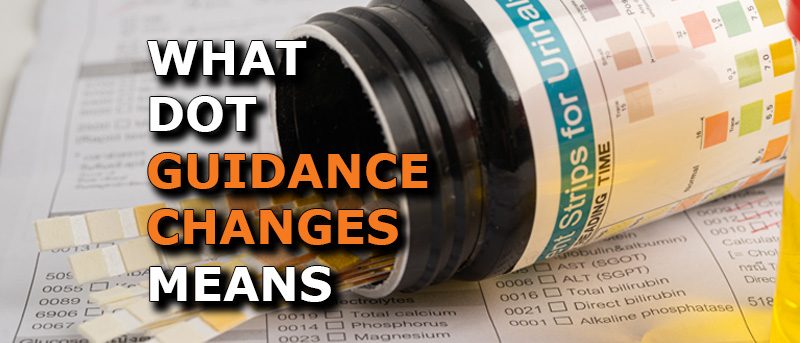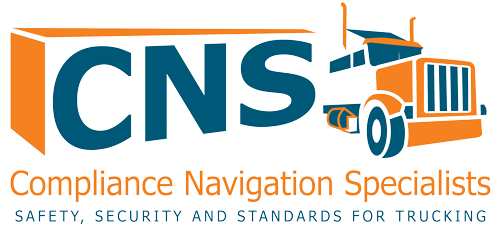Understanding the Updated DOT Drug and Alcohol Testing Guidance: What Employers Need to Know

For employers who manage safety-sensitive workers subject to Department of Transportation (DOT) drug and alcohol testing, staying compliant is critical.
The Federal Motor Carrier Safety Administration (FMCSA) recently released an updated version of the guidance document, “What Employers Need to Know About DOT Drug and Alcohol Testing: Guidance and Best Practice.”
While the core document has not been revised since 2015, the recent updates reflect evolving regulatory requirements and provide clarity for employers managing DOT testing programs.
Here’s a detailed breakdown of what has changed, why it matters, and how companies can use this guidance effectively.
Key Changes from the June 1, 2015 Version
- Owner-Operators Clarified
- Page 5: A paragraph was added to specifically address FMCSA-regulated owner-operators.
- Page 15: Owner-operators are not required to complete supervisor reasonable suspicion training.
Why it matters: Owner-operators often operate under different regulatory requirements than company drivers. These clarifications help companies correctly apply training and testing obligations. These carriers do need third-party drug consortium membership – join our today.
- Updated Employee Coverage
- Page 6: The table of covered/regulated employees has been updated to reflect current regulations.
Why it matters: Ensuring all safety-sensitive personnel are properly identified is critical to program compliance and avoiding DOT violations.
- Page 6: The table of covered/regulated employees has been updated to reflect current regulations.
- Clarifications for Supervisors and Service Agents
- Page 10: Clarifies the difference between DOT and non-DOT testing forms.
- Page 27: Service agents do not make collection site refusal determinations.
- Page 31: DER responsibilities clarified for employee refusals at collection sites.
- Page 47: C/TPAs (Consortium/Third Party Administrators) are considered service agents.
Why it matters: Misunderstandings about roles can lead to procedural errors, testing violations, and potential fines. Clear guidance ensures everyone in the program knows their responsibilities.
- Random Testing Clarified
- Page 21: Added language clarifying what constitutes “random” testing.
Why it matters: Random testing is a cornerstone of DOT drug and alcohol compliance. Employers now have a clearer understanding of how to implement it correctly.
- Page 21: Added language clarifying what constitutes “random” testing.
- Regulatory Updates
- Pages 24, 45: Language updated per Executive Order 14168.
- Multiple pages: Updates include FMCSA’s Clearinghouse requirements, FAA’s PRD requirements, and references to the oral fluid testing rule.
- Page 16: Removed FAA’s PRIA requirements.
Why it matters: These updates align the guidance with current federal mandates, reducing compliance risk and helping companies stay current with inter-agency rules.
- Practical Program Guidance
- Page 36: Example updated for submitting the MIS report.
- Page 40: Removed outdated USCG publication reference.
- Removed references to “blind specimen” testing, no longer required as of 2018.
- Appendices A, B, D: Updated to reflect current practices and requirements.
Why it matters: These practical changes help employers streamline recordkeeping, reporting, and procedural requirements, ensuring smoother operations of DOT testing programs.
- Document Usability Improvements
- Multiple graphics removed to improve transmission and download speed.
- Updated website addresses and hyperlinks for easier access to resources.
Why it matters: Easier access to the document allows employers and program administrators to quickly reference requirements without technological barriers.
Why These Changes Are Important
Even small clarifications can have a big impact on program compliance.
Misinterpretation of roles, testing procedures, or coverage can lead to regulatory violations, fines, or legal exposure.
These updates:
- Provide clear guidance for owner-operators, supervisors, and service agents.
- Align the document with current federal requirements and executive orders.
- Ensure employers are using the most up-to-date procedures for testing, reporting, and recordkeeping.
- Improve the usability of the document so employers can quickly access critical information.
Related: What DOT Drug Testing Changes Are Coming in 2026 — And How DERs Can Prepare Now
How Companies Should Use This Document
- Review the Updates Carefully – Ensure program managers and DERs understand all changes, especially regarding random testing, employee coverage, and service agent roles.
- Update Internal Procedures – Revise company policies, training, and documentation to reflect new clarifications.
- Train Staff – Supervisors, DERs, and service agents should be trained on updated responsibilities and procedures.
- Reference in Audits – Use the document as a standard when performing internal or DOT audits to demonstrate compliance.
- Keep for Ongoing Reference – This document remains a go-to resource for running a compliant, efficient DOT drug and alcohol testing program.
Your Expert DOT Drug Testing Compliance Partner
The updated DOT guidance document ensures that employers are operating in line with current federal regulations and best practices. Companies that actively incorporate these updates will benefit from clearer responsibilities, improved program efficiency, and reduced compliance risk.
Our experts ensure that all DOT rules and regulations are followed, including the implementation of random drug tests for you and your drivers, updating your company drug testing policies, record retention and document purge management.
We take all the necessary steps and precautions to keep you and your drivers compliant with the DOT drug and alcohol testing requirements.
Need help reviewing your policies or want to join our consortium, fill out the form below.
Questions about DOT Compliance, Licensing, Audits, Programs, etc.?
Our DOT Specialists are here to help!
What are you searching for?
Is DOT Compliance your Top Priority?
Our DOT Compliance Programs ensure it is your top priority and keeps your business running.
Related Services
Subscribe to our Monthly Newsletter
Receive the latest transportation and trucking industry information about FMCSA and DOT Audits, Regulations, etc.
Related news
Trucking News
Get the latest trucking news on DOT Compliance, Licensing, Audits, and more!

A Complete Guide to CDL Endorsements and Restrictions for Non-Trucking Companies
Hiring in 2026? Make sure you’re hiring qualified drivers who have all the right licensure and endorsements to operate your company’s vehicles. If your company

Legal Work Status and DQ Files: How to Verify a Driver’s Legal Right to Work in the U.S.
Driver shortages are leading more carriers to consider immigrant CDL applicants—but not all are vetted equally. Learn how to verify work eligibility and document it

Why a “Warning” Can Hurt More Than a Citation for New Fleets
For many new or small fleets, getting stopped at a weigh station or roadside inspection can be a nerve-racking experience—especially when you’re trying to maintain
